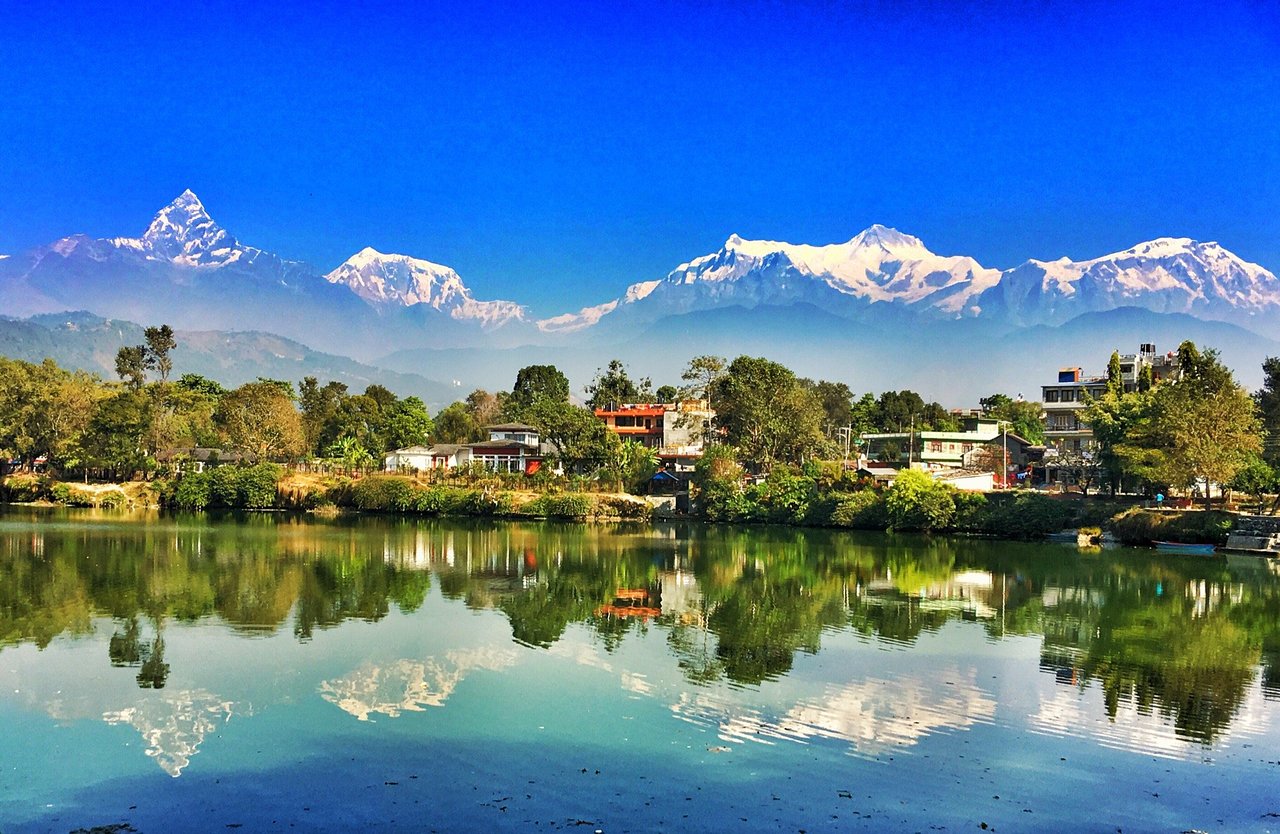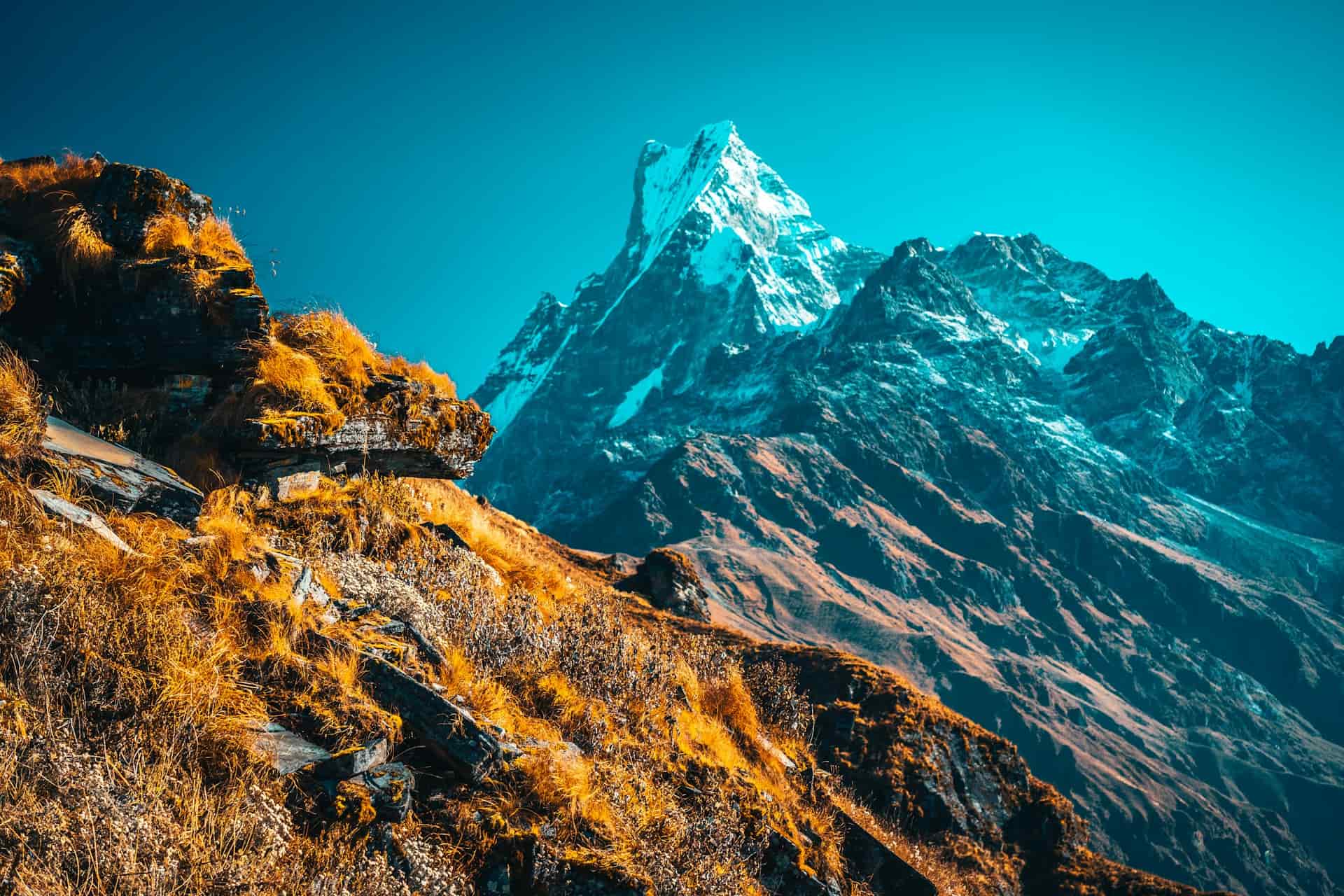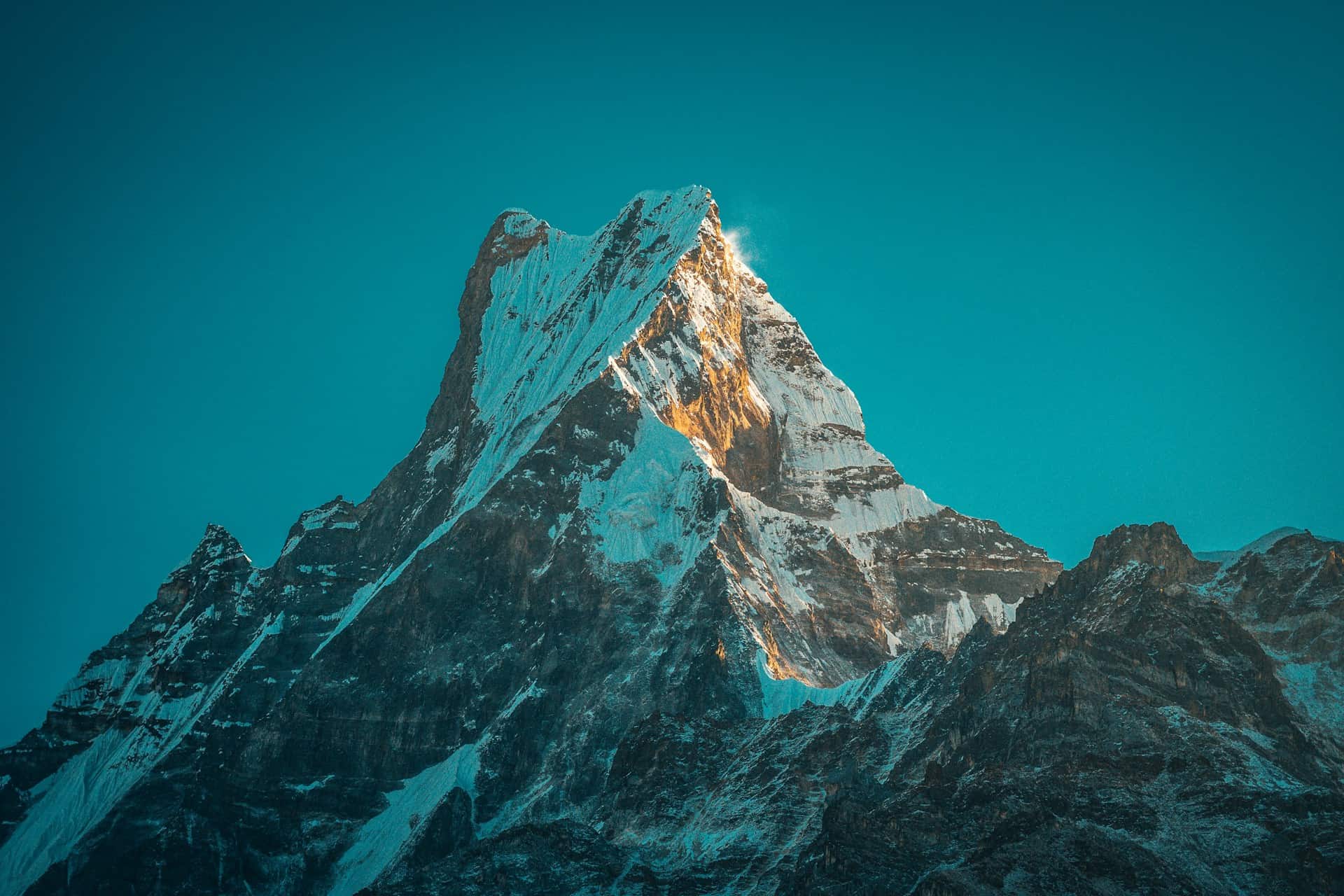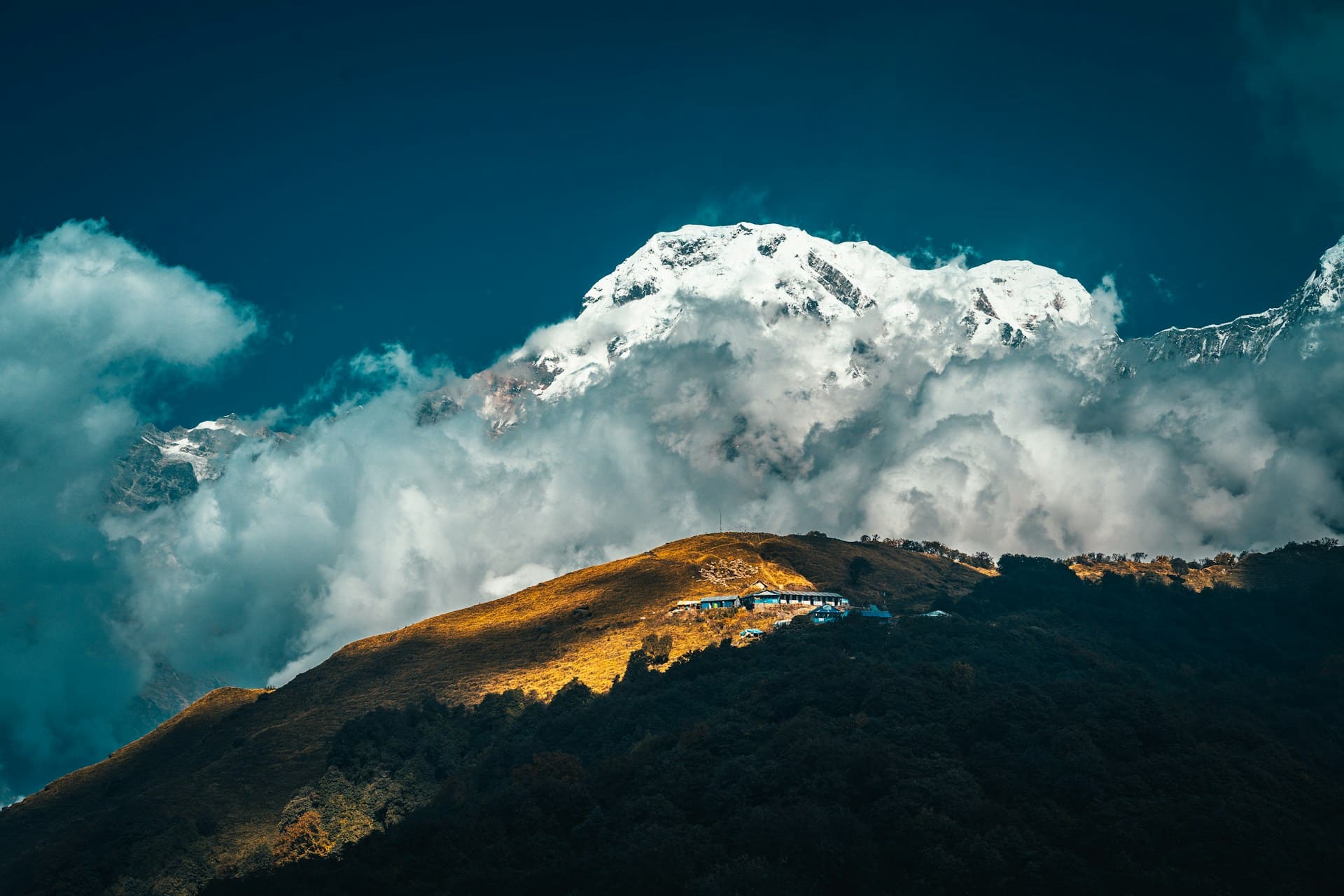Nepal, known for its awe-inspiring landscapes, rich history, and vibrant culture, is an adventure lover's paradise. Whether you're trekking in the Himalayas, exploring ancient temples, or savouring delectable local cuisine, Nepal offers something for everyone. As we look ahead to 2024 and 2025, here are the 39 best things you shouldn’t miss in this breathtaking country. Pack your bags, because your unforgettable journey is about to begin!
Places to Visit in Nepal
Nepal is a land of stunning landscapes and rich cultural heritage, offering countless opportunities for adventure and exploration. Here’s a simple guide to some of the must-visit places that capture the essence of this beautiful country.
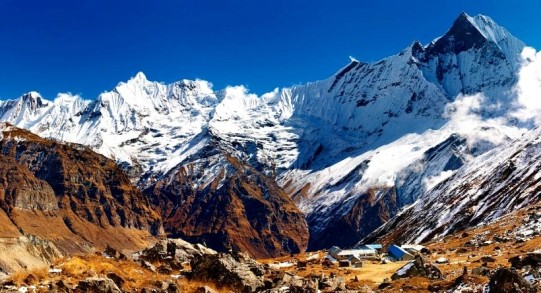
Everest Base Camp: A Trekker's Paradise
Trekking to Everest Base Camp is an unforgettable experience that not only offers breathtaking mountain views but also allows you to immerse yourself in the unique Sherpa culture. The trail winds through charming villages and ancient monasteries, giving you a chance to experience the warm hospitality of the local people.
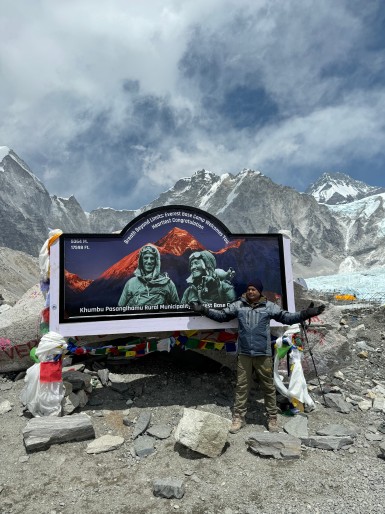
Kathmandu Valley: A Cultural Odyssey
Exploring the Kathmandu Valley is like stepping back in time. The ancient cities of Kathmandu, Bhaktapur, and Patan are filled with history, featuring intricate temples, grand palaces, and bustling markets. Each of these cities is recognized as a UNESCO World Heritage Site, offering a deep dive into Nepal’s cultural richness.
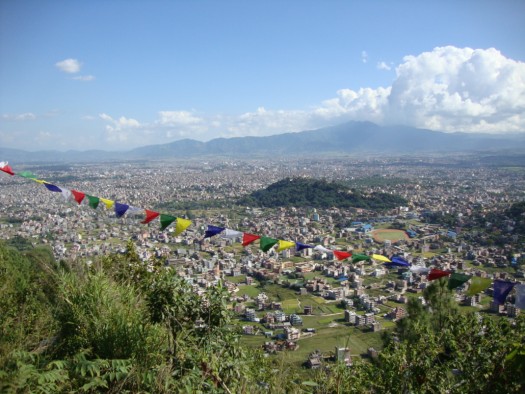
Pokhara: Serenity Amidst Adventure
In Pokhara, you can find a perfect blend of peace and adventure. The serene Phewa Lake, with its stunning backdrop of the Annapurna mountains, invites you to relax, while activities like paragliding, trekking, skydiving, bungee jumping and mountain biking cater to the thrill-seekers. The natural beauty of Pokhara makes it a must-visit destination.
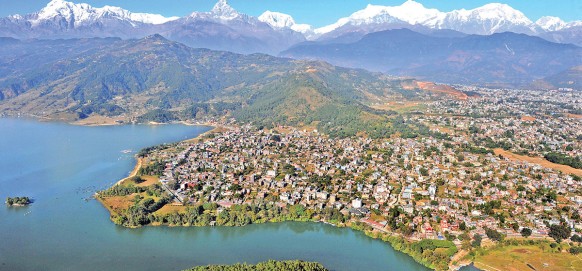
Chitwan National Park: A Wildlife Wonderland
A visit to Chitwan National Park offers an exciting wildlife adventure. This UNESCO World Heritage Site is home to diverse species, including rhinos, tigers, and a wide variety of birds. Guided jungle safaris provide a close-up look at the rich ecosystems, highlighting the importance of conservation.
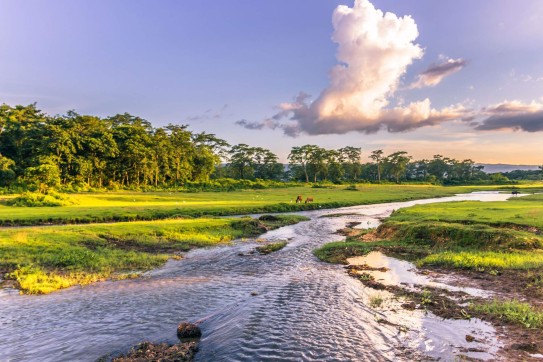
Lumbini: The Birthplace of Buddha
Lumbini, the birthplace of Lord Buddha, is a place of deep spiritual and historical significance. The peaceful gardens and ancient ruins create a serene atmosphere, making it a place for reflection and inspiration. It’s a destination that attracts both pilgrims and travellers interested in Buddhist history.
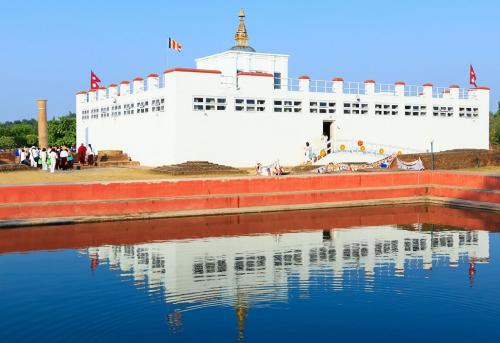
Rara Lake: Nature's Hidden Gem
Rara Lake, Nepal's largest lake, is a hidden gem surrounded by majestic mountains. Located in a remote area, this peaceful spot offers breathtaking natural beauty and tranquillity, making it an ideal retreat for those who love nature and adventure in off-the-beaten-path locations.
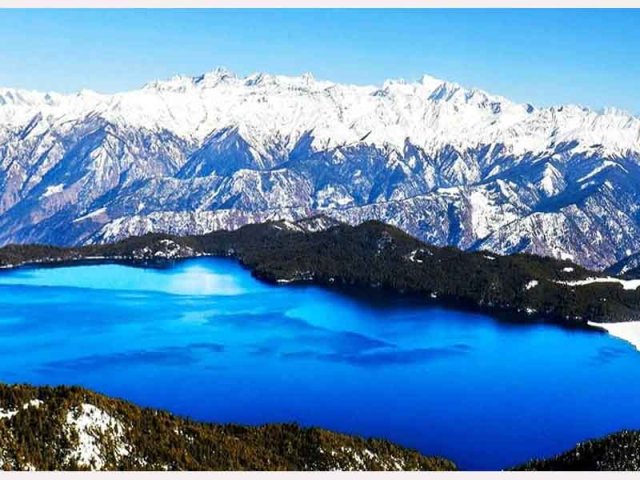
Bandipur: A Glimpse into Newari Culture
The hilltop village of Bandipur offers a glimpse into traditional Newari culture. The well-preserved architecture and warm hospitality of the locals create a charming atmosphere, while the panoramic views of the Himalayas make it a picturesque destination.
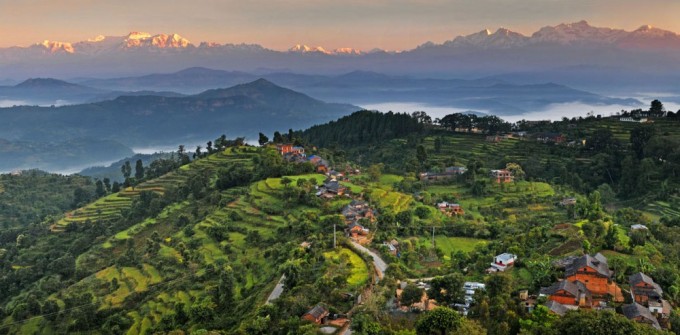
Mustang: The Ancient Kingdom
In Mustang, the ancient kingdom’s unique landscapes and rich Tibetan culture provide a fascinating exploration opportunity. The region’s ancient monasteries and dramatic geological formations tell stories of its long history, making it an intriguing destination for adventure seekers.
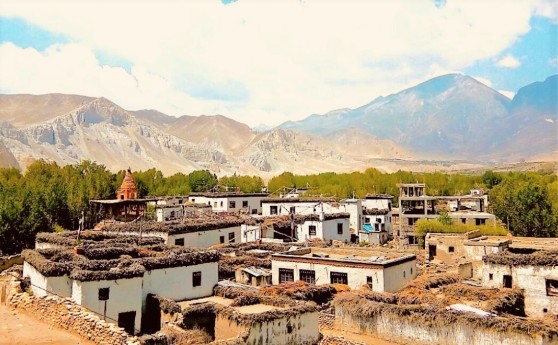
Gosaikunda Lake: A Sacred Alpine Retreat
Gosaikunda Lake, located in Langtang National Park, is a sacred site revered by both Hindus and Buddhists. The lake’s stunning alpine setting and its cultural significance make it a special place to visit, offering both natural beauty and spiritual depth.
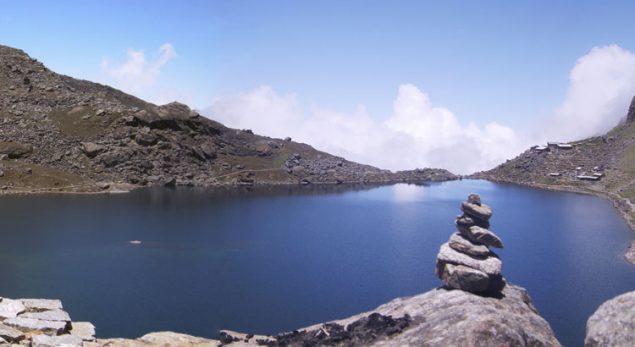
Ilam: A Scenic Escape into Tea Culture
Ilam, with its rolling hills and lush tea gardens, is a peaceful escape in eastern Nepal. This region is perfect for those who appreciate nature and enjoy the taste of fine teas. The tranquil ambiance of Ilam’s tea plantations provides a perfect setting to unwind and relax.
Nepal’s diverse attractions offer a mix of adventure, culture, and natural beauty, making it a perfect destination for travellers looking to experience something truly special. Whether you're trekking in the Himalayas, exploring ancient cities, or simply relaxing in a serene village, Nepal has something for everyone.
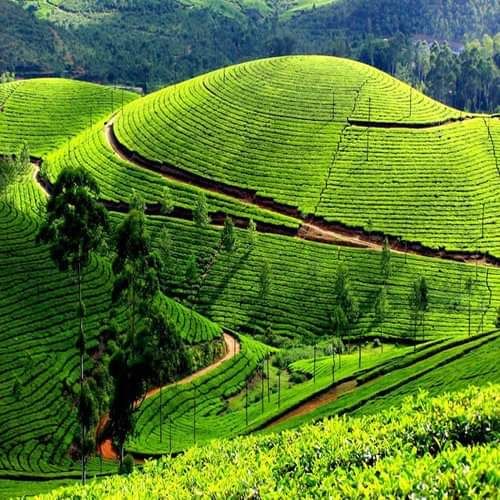
Video Tour of Top Places to Visit in Nepal
Food to Taste in Nepal
Nepal, a land of breathtaking landscapes and rich cultural heritage, is also home to an array of delectable cuisines that reflect its diverse traditions and local ingredients. If you ever find yourself in this majestic country, there are certain dishes you must not miss. Here’s a guide that takes you on a flavorful journey through some of the most iconic foods to taste in Nepal.
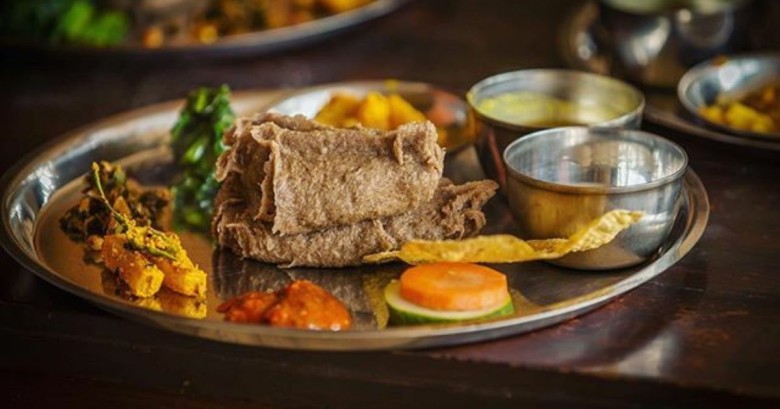
Dal Bhat – The Heart of Nepalese Cuisine
At the very core of Nepalese dining lies Dal Bhat, a comforting staple enjoyed across the nation. This iconic meal consists of steamed rice (bhat) served with a flavorful lentil soup (dal) that is both nutritious and satisfying. Frequently garnished with seasonal vegetables and rich meat curries, each serving offers a unique blend of flavours. The communal aspect of sharing dal bhat adds a layer of warmth to this dining experience, making it perfect for family gatherings.
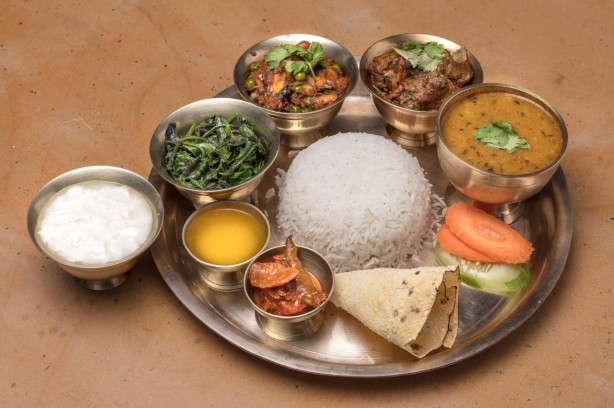
Momos – The Flavorful Dumplings
No trip to Nepal is complete without trying Momos, the beloved dumplings that locals savour as snacks or quick meals. These delicious pockets can be filled with a variety of ingredients, ranging from seasoned meats to fresh vegetables. Served with zesty dipping sauces, momos have won the hearts of tourists and locals alike. Whether steamed or fried, every bite is a celebration of Nepalese culinary creativity.

Newari Cuisine – A Cultural Feast
Dive deeper into Nepal's culinary diversity by exploring Newari cuisine. This regional food style is vibrant and rich, showcasing the heritage of the Newar community. Signature dishes such as bara (spiced lentil patties), yomari (sweet dumplings filled with coconut and jaggery), and chhoila (spiced grilled meat) reveal the local's innovative approach to flavours and ingredients. Each dish tells a story, making Newari cuisine not just a meal but a cultural experience.
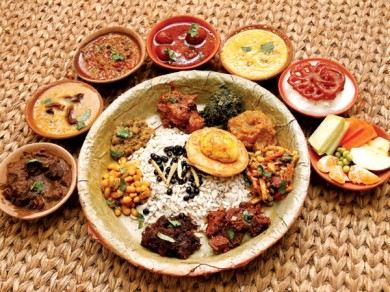
Thakali Cuisine – A Taste of Tradition
Another gem in the Nepalese culinary landscape is Thakali cuisine, celebrated for its balance of flavors and textures. The star dish, Thakali dal bhat, features fluffy rice accompanied by lentils, gundruk (fermented leafy greens), and a variety of curries. This meal not only reflects Thakali traditions but also creates a fulfilling dining experience that warms the soul.
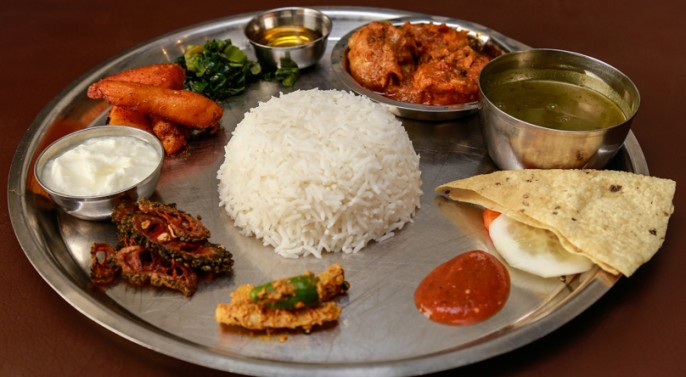
Sel Roti – A Sweet Celebration
Sel Roti, a traditional Nepali rice bread, is a must-try treat, especially during festivals and special occasions. Its crispy exterior and soft, chewy interior showcase the unique fermentation process that enhances its flavor. Often enjoyed as a sweet snack or dessert, sel roti encapsulates the joy of Nepali celebrations, making it the perfect accompaniment to any festive meal.
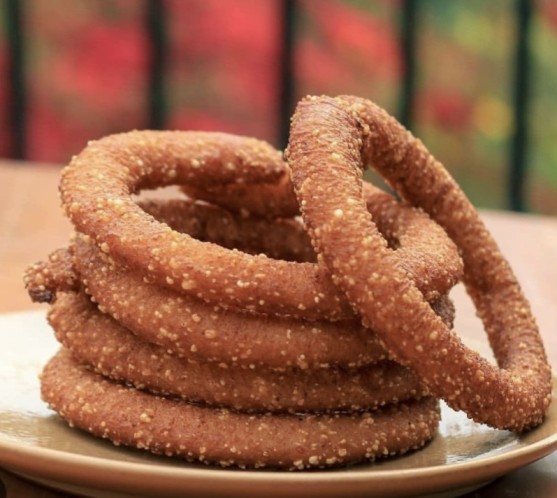
Dhido – Comfort in a Bowl
Experience the taste of home with Dhido, a traditional dish crafted from buckwheat or maize flour. Renowned for its nutritious benefits, dhido is often served warm alongside curries or soups. This dish embodies the spirit of Nepali comfort food, providing not just nourishment but also a sense of belonging.
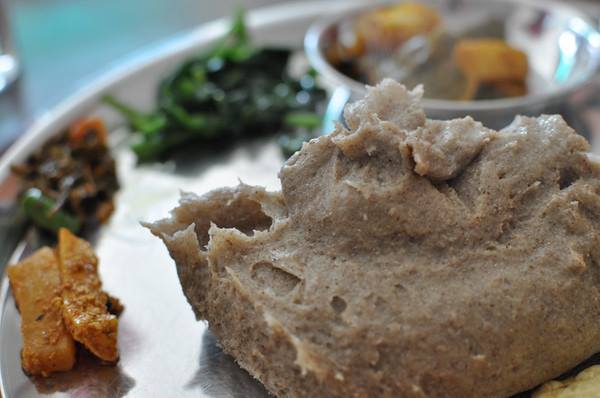
Aloo Tama – A Flavorful Medley
Last but not least, we have Aloo Tama, a unique Nepali dish that blends bamboo shoots, potatoes, and black-eyed beans. This tangy and spicy preparation highlights the ingenuity of Nepali cooking, presenting a diverse mix of flavours that reflect the country's abundant natural ingredients.
Nepal's culinary offerings are as diverse and rich as its culture and landscape. From the fundamental flavours of dal bhat to the sweet indulgence of sel roti or the unique tastes of gundruk and Aloo Tama, every dish tells a story and mirrors the heart of Nepalese hospitality. So, when you find yourself in this stunning country, embrace the flavours, enjoy the communal dining experiences, and relish every bite of Nepali cuisine. Your palate will thank you for it!
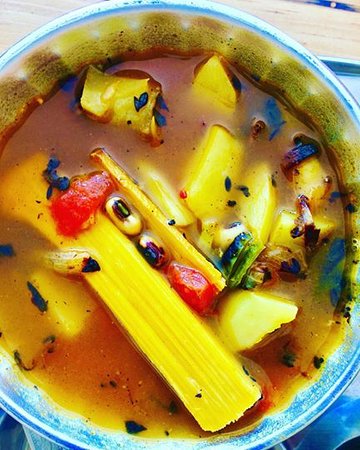
Cultural experiences to enjoy in Nepal
Nepal, with its breathtaking landscapes and diverse cultures, provides numerous opportunities to immerse yourself in its traditions and customs. Whether you are exploring lively markets or staying with local families, every experience in this enchanting country allows you to connect with its rich heritage. Here are some cultural experiences you shouldn't miss while visiting Nepal.
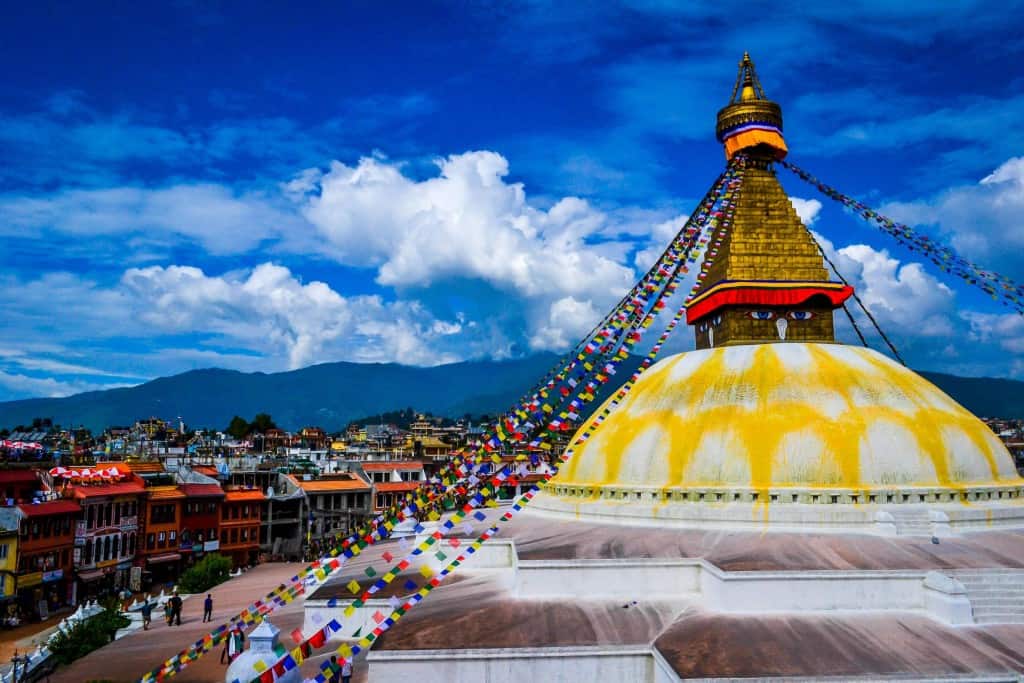
Experience a Homestay in a Gurung Village
One of the best ways to connect with Nepali culture is through a homestay in a Gurung village. Here, you’ll be embraced with warm hospitality, as if you were family. You can participate in daily activities such as farming and cooking, gaining first-hand insight into their traditional way of life. Sharing meals made from local ingredients will deepen your understanding of their customs and values, making this a memorable part of your journey.
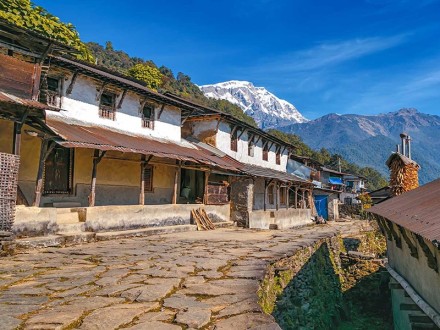
Attend the Tihar Festival
Immerse yourself in the festive spirit of Tihar, known as the festival of lights. Celebrated throughout Nepal, this vibrant festival honors animals like cows, dogs, and crows, which are seen as messengers of the gods. Homes are decorated with oil lamps, and the streets come alive with music and dance. Taking part in Tihar allows you to experience the joy and unity it brings, as well as engage in age-old rituals
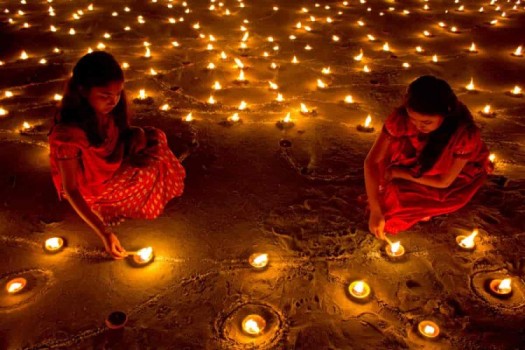
Watch a Traditional Nepali Dance Performance
Experience Nepali culture through its traditional dances, such as Lakhey and Maruni, which are vibrant and lively. These performances tell stories through movement and music, offering both entertainment and cultural education. Attending a dance show will enhance your understanding of the narratives these dances represent and the traditions they embody.
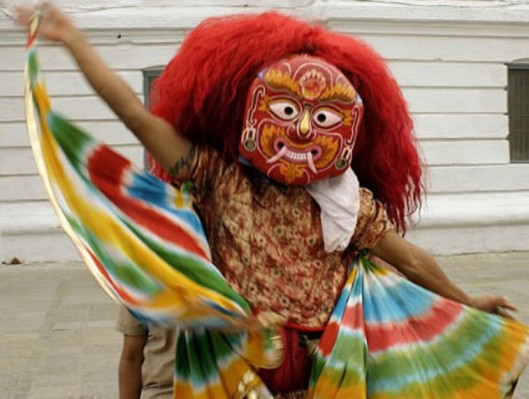
Visit a Tibetan Refugee Camp
To appreciate Nepal's rich cultural diversity, visiting a Tibetan refugee camp is essential. Here, you'll hear the stories of Tibetan refugees and learn about their resilience and cultural heritage. You can observe their craftsmanship, from carpets to jewelry, and see how they maintain their traditions in a new environment. Engaging with the community provides valuable insights into their way of life.
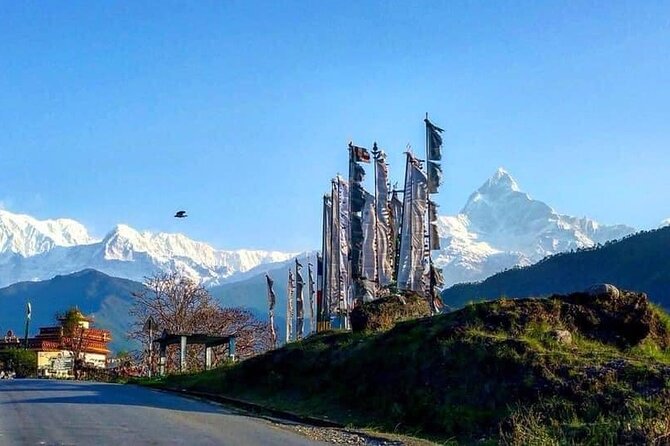
Explore a Local Market
No trip to Nepal is complete without exploring its vibrant local markets, such as Ason Bazaar in Kathmandu. Enjoy the sensory overload of bright colors, aromatic spices, and the sounds of bargaining. Shopping for local handicrafts, textiles, and spices offers a glimpse into everyday life in Nepal, allowing you to take home a piece of its culture.
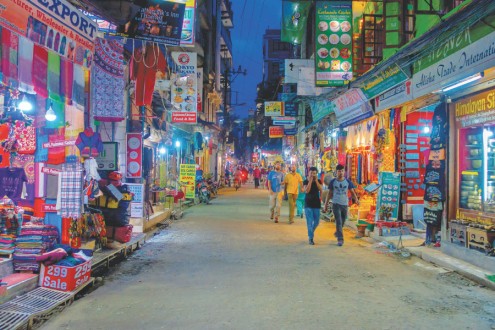
Attend a Nepali Wedding
If possible, experiencing a traditional Nepali wedding is a cultural highlight. These grand celebrations are filled with unique rituals that vary by ethnicity and region. Witnessing the joyous festivities, vibrant attire, and traditional music will give you insight into the rich customs and communal spirit of Nepali society.
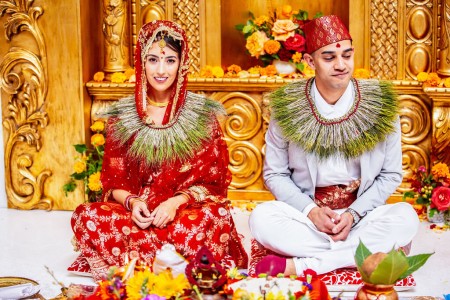
Join a Cultural Tour
For a comprehensive experience, consider joining a cultural tour that highlights Nepal's rich heritage. Led by knowledgeable locals, you’ll visit museums, historical sites, and local communities, enhancing your understanding and appreciation of the country's traditions and history. Such tours offer deep insights and make your exploration of the cultural landscape much more rewarding.
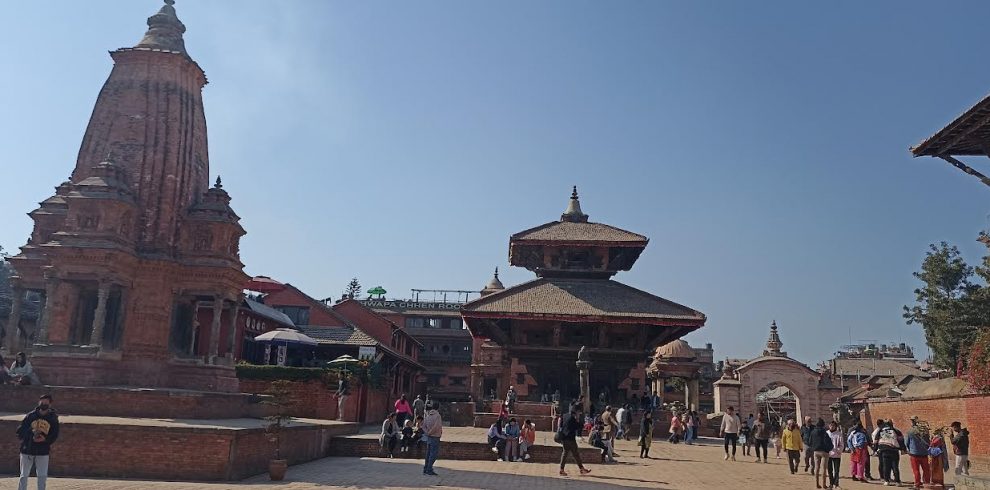
Temples and Religious Places to Visit in Nepal
Nepal, known for its breathtaking landscapes and trekking routes, is also rich in spiritual heritage. The country hosts numerous ancient temples and revered religious sites, each with its own unique story, welcoming those in search of peace and spirituality. Whether you are a devoted believer or an inquisitive traveler, visiting these temples enhances both personal experiences and cultural understanding. Let's discover some of the most significant religious places to visit in Nepal.
.jpg)
Pashupatinath Temple – The Holiest Site
Pashupatinath Temple, one of the most important Hindu temples in Nepal, is located on the banks of the Bagmati River in Kathmandu. Dedicated to Lord Shiva, it attracts thousands of pilgrims every year. The temple's remarkable architecture and spiritual ambiance, paired with the rituals at its ghats, make it a must-see. The evening Aarti ceremony, featuring priests performing fire rituals, is a memorable experience that embodies true devotion.
.jpg)
Boudhanath Stupa – A Symbol of Buddhism
The Boudhanath Stupa, a UNESCO World Heritage Site and one of the largest stupas globally, is next on our spiritual journey. This iconic structure serves as a center for Tibetan Buddhism, frequented by monks and worshippers. Visitors often walk around the stupa while spinning prayer wheels, engaging in a kora (ritual circumambulation), immersing themselves in the peaceful atmosphere. Numerous monasteries surround Boudhanath, enhancing its spiritual significance, making it a vital stop in Kathmandu.

Swayambhu (Monkey Temple) – A Scenic Retreat
Swayambhunath, commonly known as the Monkey Temple, sits atop a hill, offering panoramic views of the Kathmandu Valley. This ancient stupa features both Buddhist and Hindu symbols and is home to many monkeys. Climbing the 365 steps to the top rewards visitors with stunning vistas and a deep sense of tranquility. Colorful prayer flags fluttering in the breeze enhance the spiritual ambiance, making Swayambhunath a must-visit location.
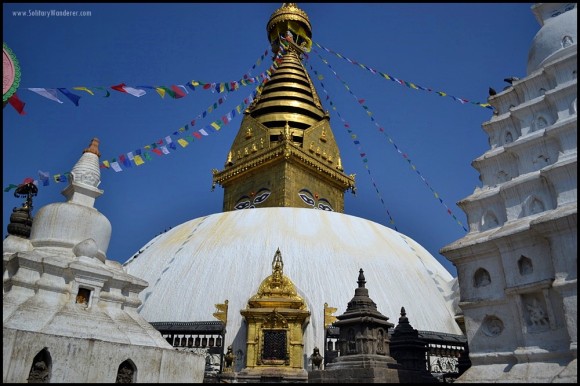
Muktinath Temple – A Sacred Site for Both Faiths
Located in the Mustang region, Muktinath Temple is revered by both Hindus and Buddhists. The site is known for its 108 water spouts, called "Muktidhara," believed to cleanse devotees' souls. The eternal flame at Muktinath adds to its mystical allure. Many pilgrims visit this site, blending spiritual fulfillment with adventure against the breathtaking backdrop of the Annapurna range.
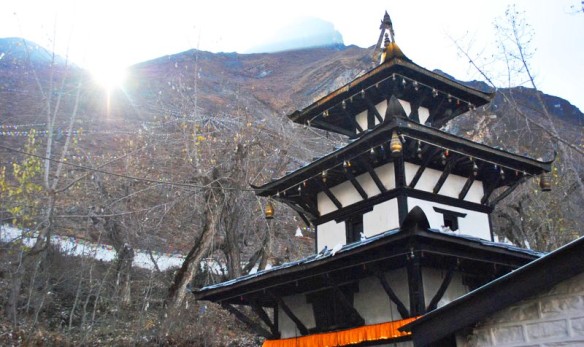
Manakamana Temple – The Wish-Fulfilling Goddess
Manakamana Temple is accessible via a scenic cable car ride and is dedicated to the goddess Manakamana, who is said to grant the wishes of her devotees. Situated on a hilltop, the temple attracts many visitors eager to pray and enjoy the stunning valley views. The exciting cable car journey combined with the temple’s peaceful setting offers a unique spiritual experience.
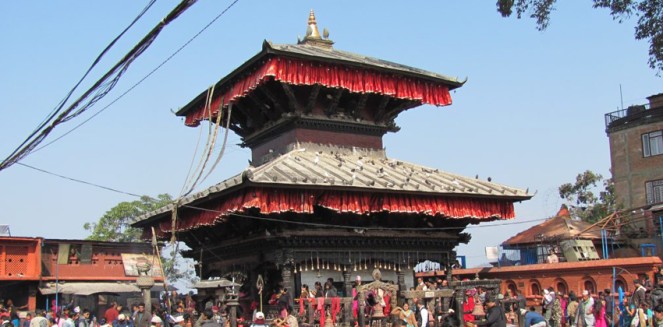
Janaki Mandir – An Architectural Wonder
Janaki Mandir, located in Janakpur, is a beautiful example of Indo-Saracenic architecture dedicated to Goddess Sita, a key figure in the Ramayana. With its impressive white façade and intricate carvings, the temple captivates visitors. Janaki Mandir is not only a significant pilgrimage site for Hindus but also represents the rich cultural heritage of the Mithila region.
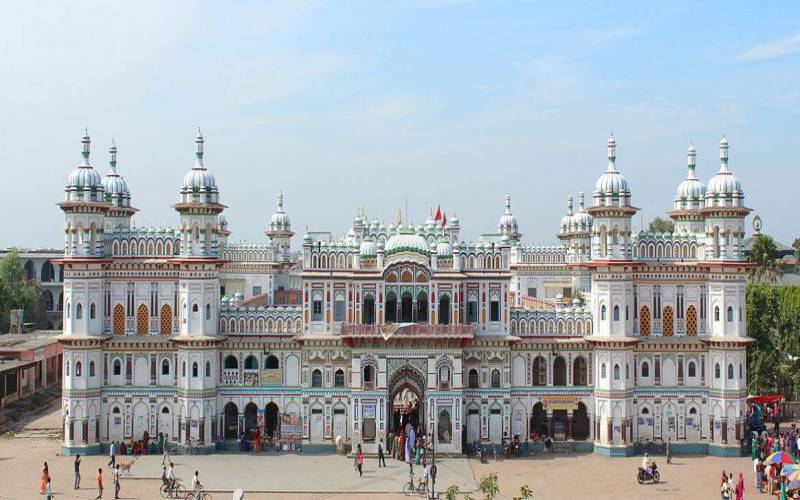
Budhanilkantha Temple – The Reclining Vishnu
Budhanilkantha Temple is known for its monumental reclining statue of Lord Vishnu resting on a serpentine bed. Situated in a tranquil pond, the temple's serene environment enhances its sacredness. It is an ideal spot for quiet reflection and spiritual connection, cherished by both locals and tourists.
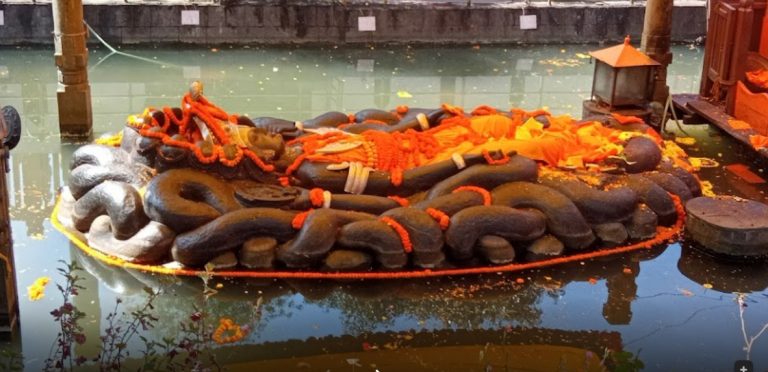
Bindabasini Temple – Scenic Spirituality in Pokhara
In Pokhara, Bindabasini Temple, dedicated to Goddess Durga, offers a spiritual sanctuary amidst breathtaking natural beauty. Perched on a hill, it provides panoramic views of the majestic Annapurna range, perfect for those seeking spiritual renewal surrounded by stunning landscapes.

Halesi Mahadev Temple – The Cave of Enlightenment
Tucked in the Khotang district, Halesi Mahadev Temple is an impressive cave temple sacred to both Hindus and Buddhists. Dedicated to Lord Shiva, it features striking stalactite formations that add to its allure. The challenging journey to reach this site rewards pilgrims with a meaningful spiritual experience.
Visiting the temples and religious sites of Nepal is more than just traveling; it invites you to immerse yourself in rich traditions and profound spiritual practices. Each temple has its own narrative, inviting visitors to explore the sacred and connect with the divine. Whether you seek enlightenment, blessings, or simply appreciate the artistry and devotion embodied in these places, Nepal's spiritual landscape has something for everyone. Embrace the journey and let the energy of these holy sites enhance your understanding of spirituality and tranquility.
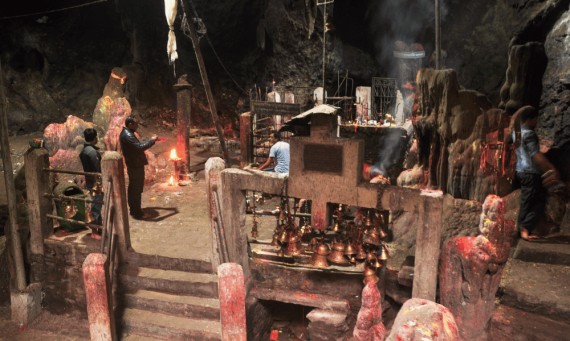
Dakshinkali Temple – An Immersive Ritual Experience
Dakshinkali Temple, located just south of Kathmandu, is dedicated to the powerful goddess Kali. Known for rituals that involve animal sacrifices, it draws devoted followers during special ceremonies. The charged atmosphere offers a raw glimpse of faith and devotion, providing a unique experience.
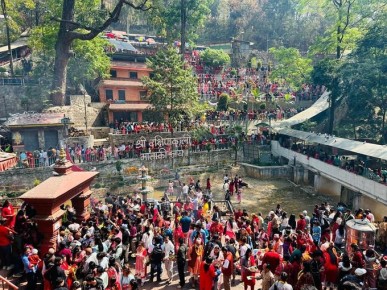
Changunarayan Temple — A Sacred Journey Through Time
Situated on a hilltop near Bhaktapur, Changunarayan Temple is one of the oldest Hindu temples in Nepal. Dedicated to Lord Vishnu, this temple dates back to the 4th century and features intricate carvings and stunning artwork. The surrounding area offers breathtaking views of the Kathmandu Valley, providing a peaceful setting for reflection. Visiting Changunarayan feels like stepping back in time, allowing you to experience the essence of ancient religious practices that continue to thrive.
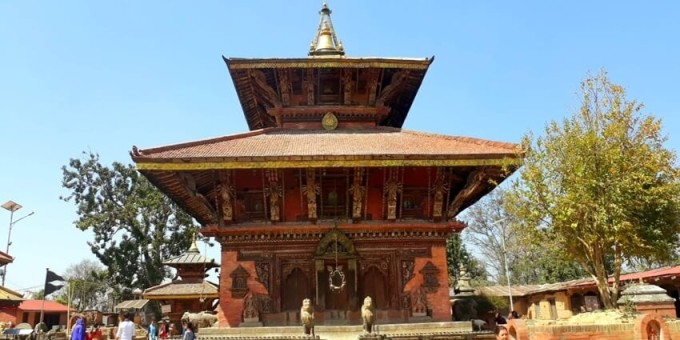
Video Tour of Temples and Religious Places to Visit in Nepal
Ancient Places to Visit in Nepal
Nepal, with its rich history and culture, is home to some of the world's most captivating ancient sites. From grand temples and palaces to lively squares that celebrate its heritage, each location tells a unique story. Join us as we explore some enchanting ancient sites in Nepal that highlight the architectural beauty and cultural significance of this Himalayan treasure.
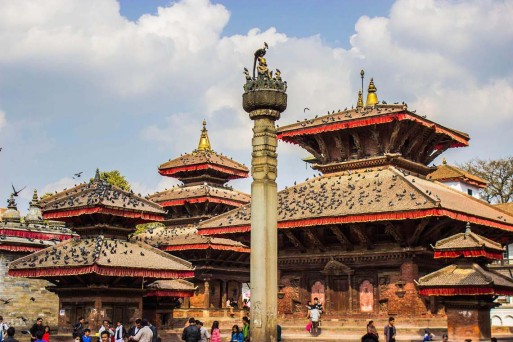
Bhaktapur Durbar Square — The Heart of Newar Architecture
Located in the center of Bhaktapur, Bhaktapur Durbar Square is a UNESCO World Heritage Site showcasing the best of Newar architecture. The square features intricate palaces, courtyards, and temples displaying exceptional craftsmanship. As you stroll through its cobblestone streets, don’t miss the impressive 55-Window Palace and the beautiful Vatsala Temple. This area is rich in history, art, and culture, making it ideal for photography and exploration.
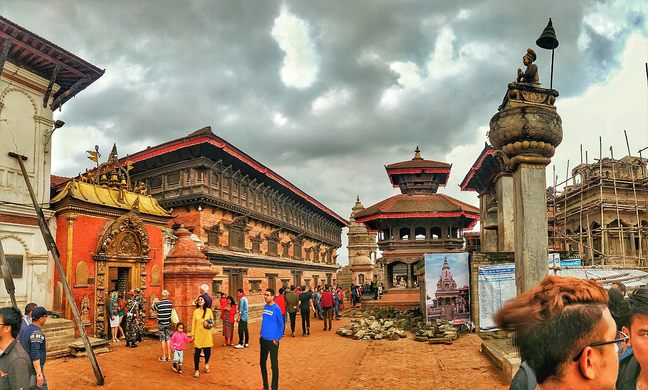
Patan Durbar Square — A Legacy of Art and Culture
Just a short distance from Kathmandu, Patan Durbar Square is another UNESCO World Heritage Site known for its ancient palaces and courtyards. The square’s centerpiece is the iconic Krishna Mandir, an architectural marvel in stone with great spiritual and artistic significance. Visitors can also explore the Patan Museum, which houses a remarkable collection of traditional Nepalese art. The vibrant atmosphere and rich heritage make Patan a must-see for those interested in Nepal's cultural landscape.
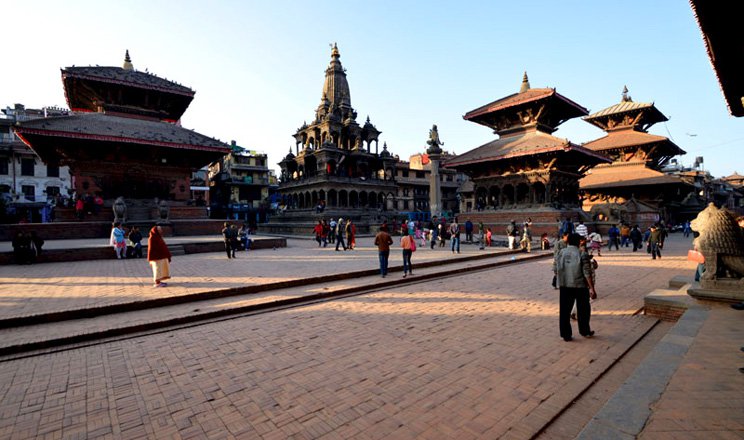
Gorkha Durbar — A Historical Epicentre
Gorkha Durbar is a historic palace of great significance to Nepali history. Located in Gorkha district, this majestic structure is the birthplace of King Prithvi Narayan Shah, who unified modern Nepal. As you explore the palace and its grounds, you'll encounter historical remnants along with stunning views of the surrounding Himalayas. Walking through Gorkha Durbar connects you to a crucial moment in Nepal's history, making it a vital site for history enthusiasts.
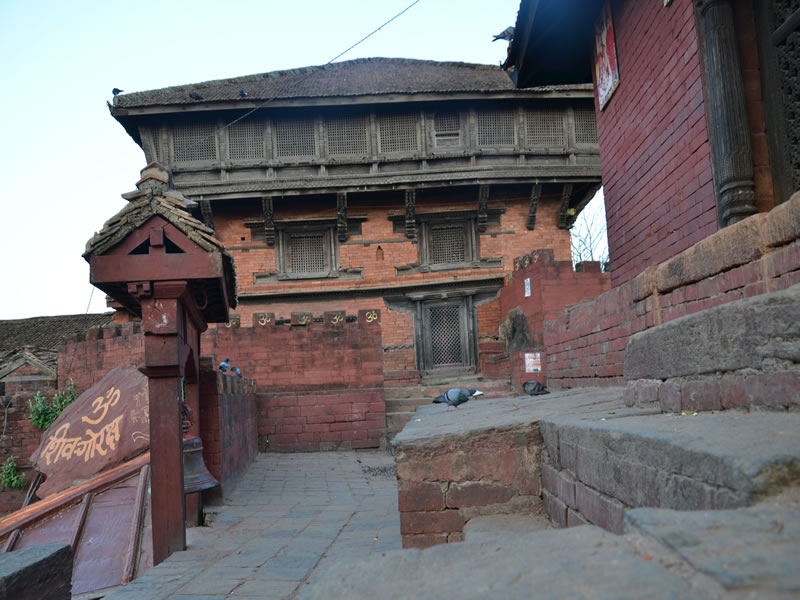
Kumari Ghar — The Residence of the Living Goddess
In the bustling Kathmandu Durbar Square, Kumari Ghar uniquely blends spirituality and tradition. It serves as the home of the Living Goddess, or Kumari, who is highly revered in the Newar community. Visitors can witness captivating ceremonies while exploring this sacred site's intricately designed courtyard and wooden balconies. The divine status of the Kumari adds a fascinating layer to the cultural significance of this location, making it an appealing destination for those looking to deepen their understanding of Nepal's spiritual heritage.
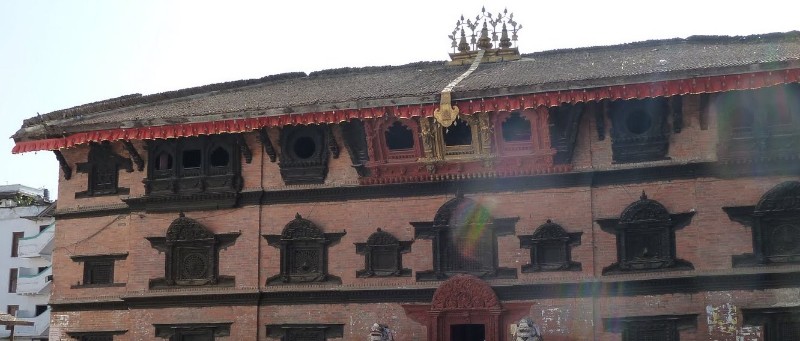
Nuwakot Durbar — The Unification Playground
The ancient palace complex of Nuwakot Durbar played a significant role in Nepal's unification. Situated in the Nuwakot district, this site showcases a fascinating combination of architectural styles influenced by various regional kingdoms. Exploring its remnants, you’ll enjoy stunning views of the surrounding landscape, which enhance its historical significance. Nuwakot stands as a testament to architectural skill and is an important landmark in Nepalese history.
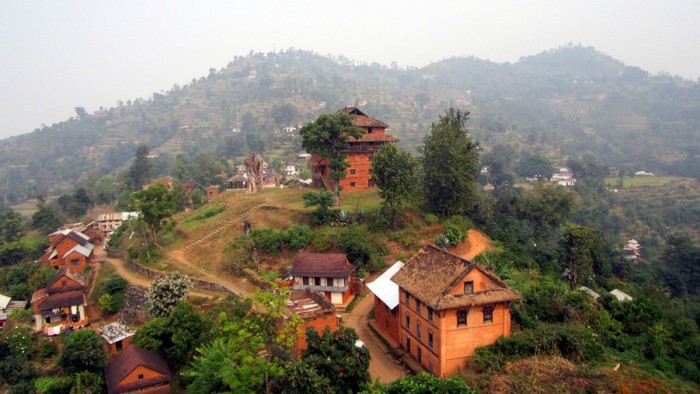
Villages to Visit in Nepal
Nepal is a land of magnificent mountains, rich culture, and vibrant communities. Beyond the towering peaks of the Himalayas lies a treasure trove of charming villages, each with its unique allure and story. From the warm hospitality of the Gurung community to the serene landscapes of remote areas, these villages provide an immersive experience into Nepal's heart and soul. In this blog post, we will explore some of the most picturesque and culturally rich villages in Nepal you should consider visiting.
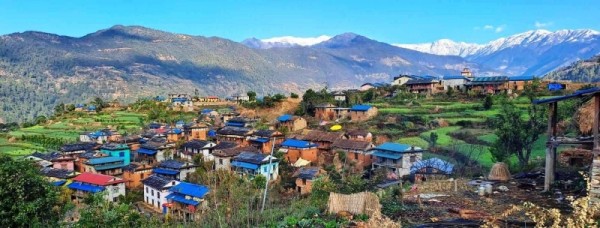
Ghandruk - The Gurung Paradise
Nestled in the Annapurna region, Ghandruk is a breathtaking Gurung village that boasts stunning views of the Annapurna range. Known for its slate-roofed houses and vibrant culture, Ghandruk is a perfect starting point for trekkers heading into the Annapurna Sanctuary. The village is also home to the Gurung Museum, where visitors can learn about the local culture, traditions, and their connection to the mountains. A trek through Ghandruk not only offers spectacular mountain vistas but also an insight into the traditional lifestyle of the Gurung people, making it a must-visit destination.
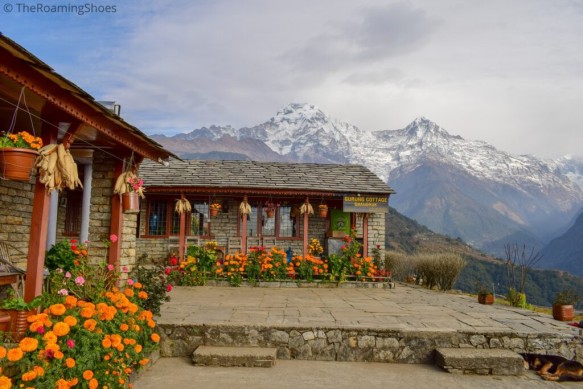
Sirubari - A Model of Community Tourism
Sirubari, recognized as Nepal's first model village for tourism, provides a unique homestay experience that immerses visitors in the local lifestyle of the Gurung community. Here, travelers can stay with local families, enjoy authentic Nepali meals, and partake in daily activities like farming and crafting. The village is renowned for its warm hospitality and picturesque views of the surrounding mountains. Visitors can also enjoy cultural performances, making their experience not just a getaway but a deep dive into the richness of Gurung traditions.
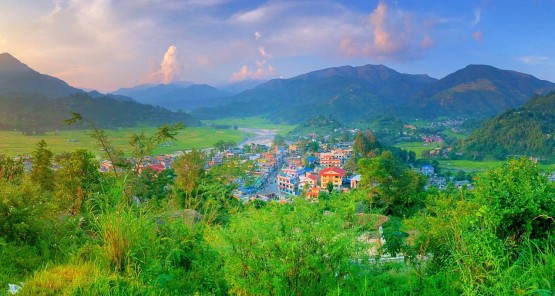
Chitlang - Nature and Culture Combined
Just a stone's throw away from Kathmandu lies Chitlang, a village that boasts both stunning landscapes and rich history. Visitors can explore ancient temples, hike through forests, or relax by the serene waters of the nearby pond. Chitlang is also famous for its delicious local cuisine, including the mouthwatering 'Chitlang ko bhok' dish. The village’s welcoming atmosphere allows tourists to engage with local life, providing a glimpse into the everyday routines of the villagers.
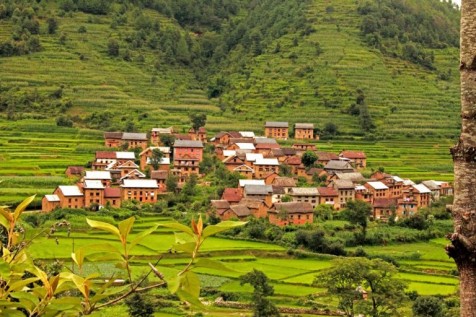
Kagbeni - A Journey into Tibetan Culture
Situated in the Mustang region, Kagbeni is a unique village where Tibetan culture and traditions are still very much alive. The village features charming mud-brick houses and ancient monasteries, offering a profound sense of tranquility. As a gateway to the Upper Mustang, Kagbeni serves as a base for trekkers embarking on adventures into the surrounding stunning landscapes. Visitors can immerse themselves in the spiritual atmosphere, learn about Tibetan Buddhism, and enjoy the breathtaking scenery of the Kali Gandaki valley.
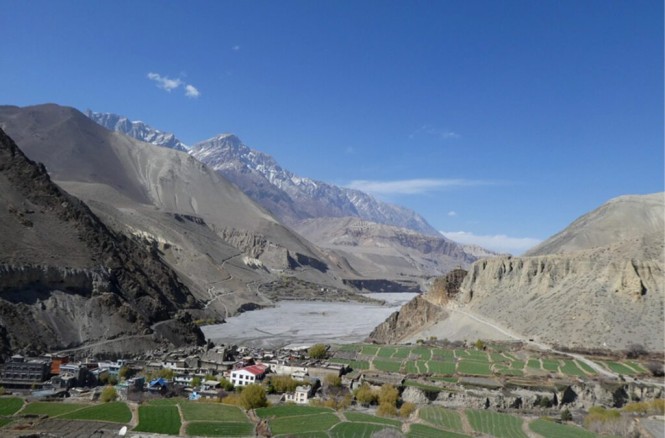
Tengboche - The Monastic Gem
Tengboche is a small yet stunning village that is primarily known for its famous monastery, Tengboche Monastery, which is the largest in the Everest region. Perched at an altitude of 3,867 meters, the monastery provides breathtaking views of some of the highest peaks in the world, including Everest and Ama Dablam. Trekking to Tengboche offers a unique blend of beautiful landscapes and cultural richness, as visitors can engage with monks and witness traditional ceremonies.
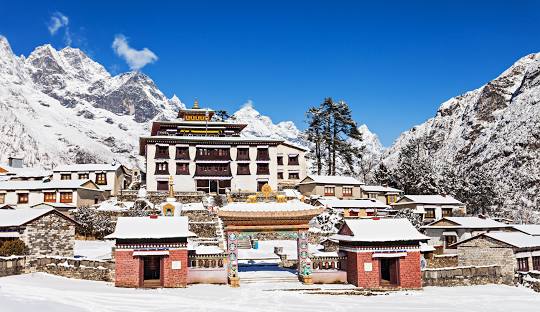
Namche Bazaar - The Gateway to Everest
Known as the gateway to the Everest region, Namche Bazaar is a bustling Sherpa village filled with shops, lodges, and stunning mountain views. This vibrant hub is a crucial stop for trekkers on their way to Everest Base Camp, offering essential services and a lively atmosphere. Visitors can explore the local markets, enjoy fresh bakery items, and learn about the Sherpa culture, making it a unique blend of adventure and culture.
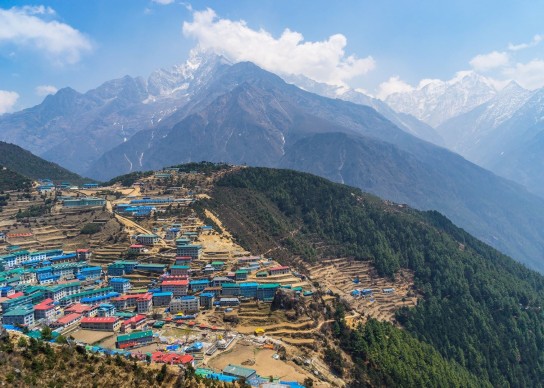
Sankhu - A Historical Journey
Sankhu is a historical village located near Kathmandu, known for its ancient temples and traditional Newari architecture. The village has a rich history and hosts several significant sites, such as the Bajrayogini Temple and the ancient stone carvings. Walking through Sankhu’s streets feels like stepping back in time, allowing visitors to appreciate traditional craftsmanship and local customs deeply.
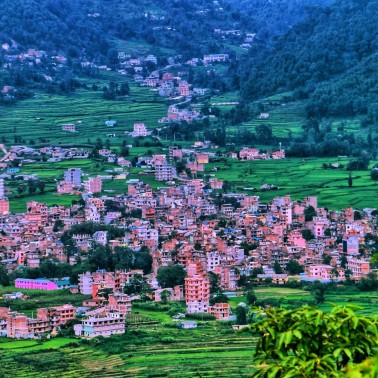
Recent Blog Posts
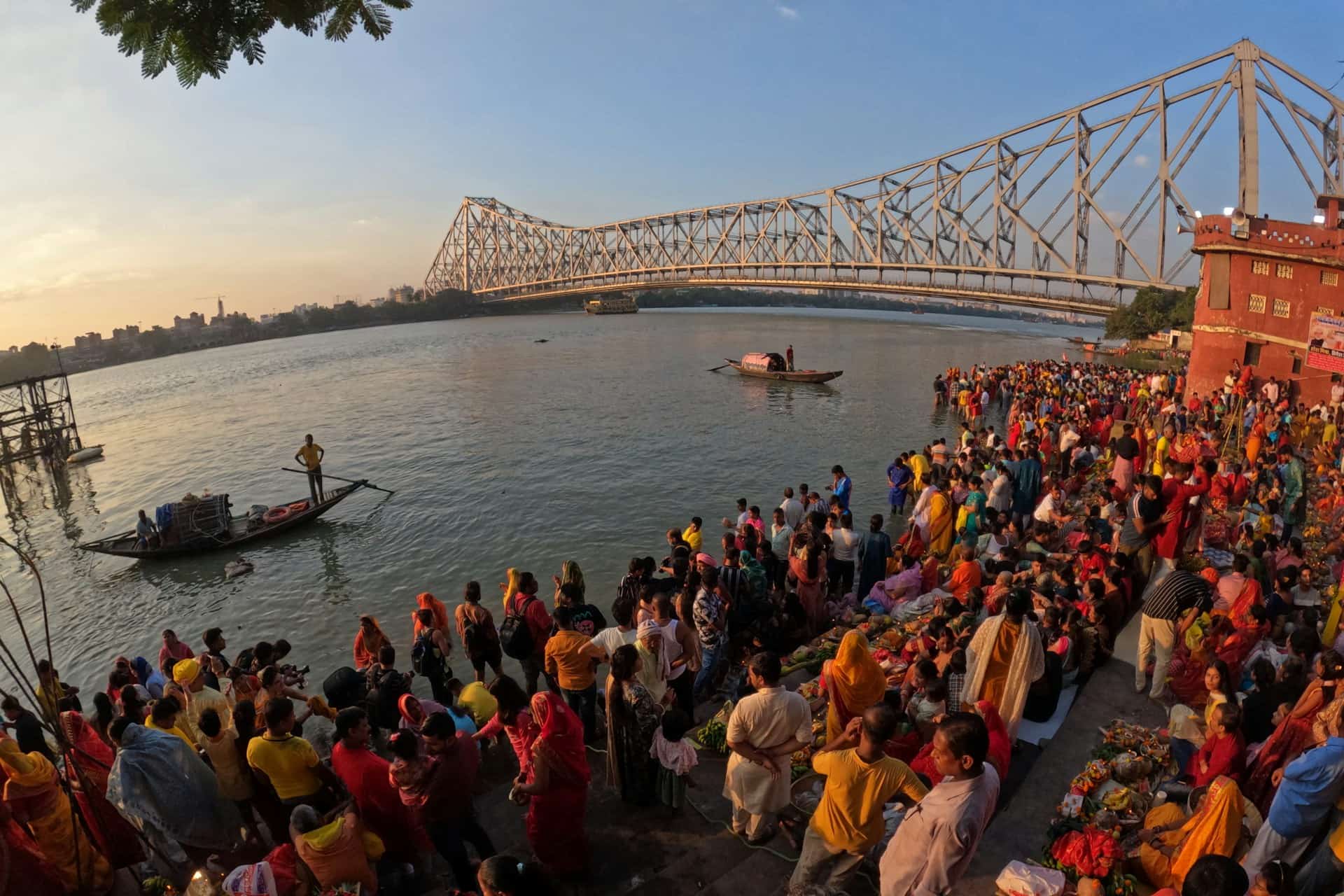
Chhath: A Sacred Festival of Devotion and Gratitude
Nov 07, 2024
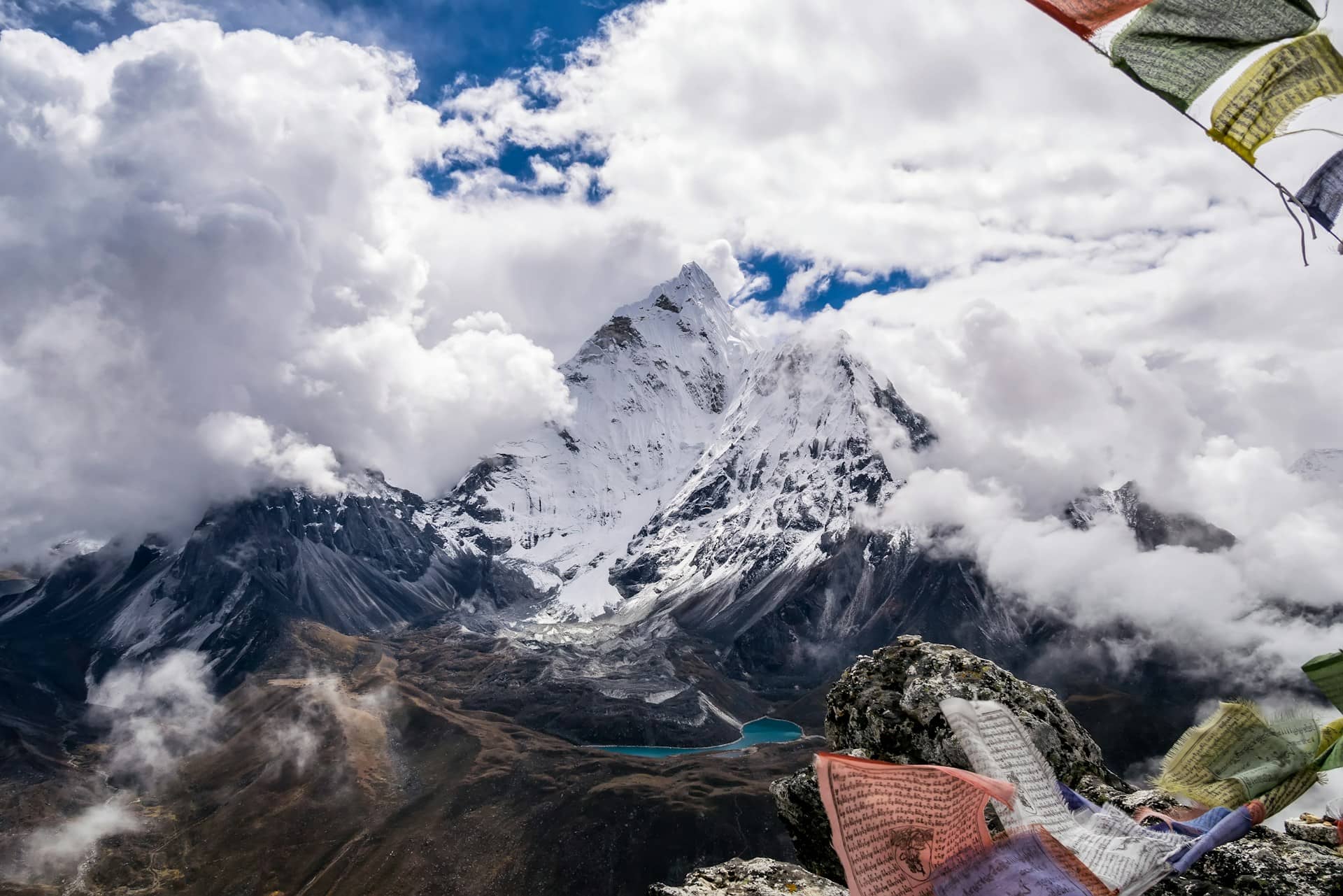
Off-Season Trekking in Nepal: A Comprehensive Guide
Oct 24, 2024
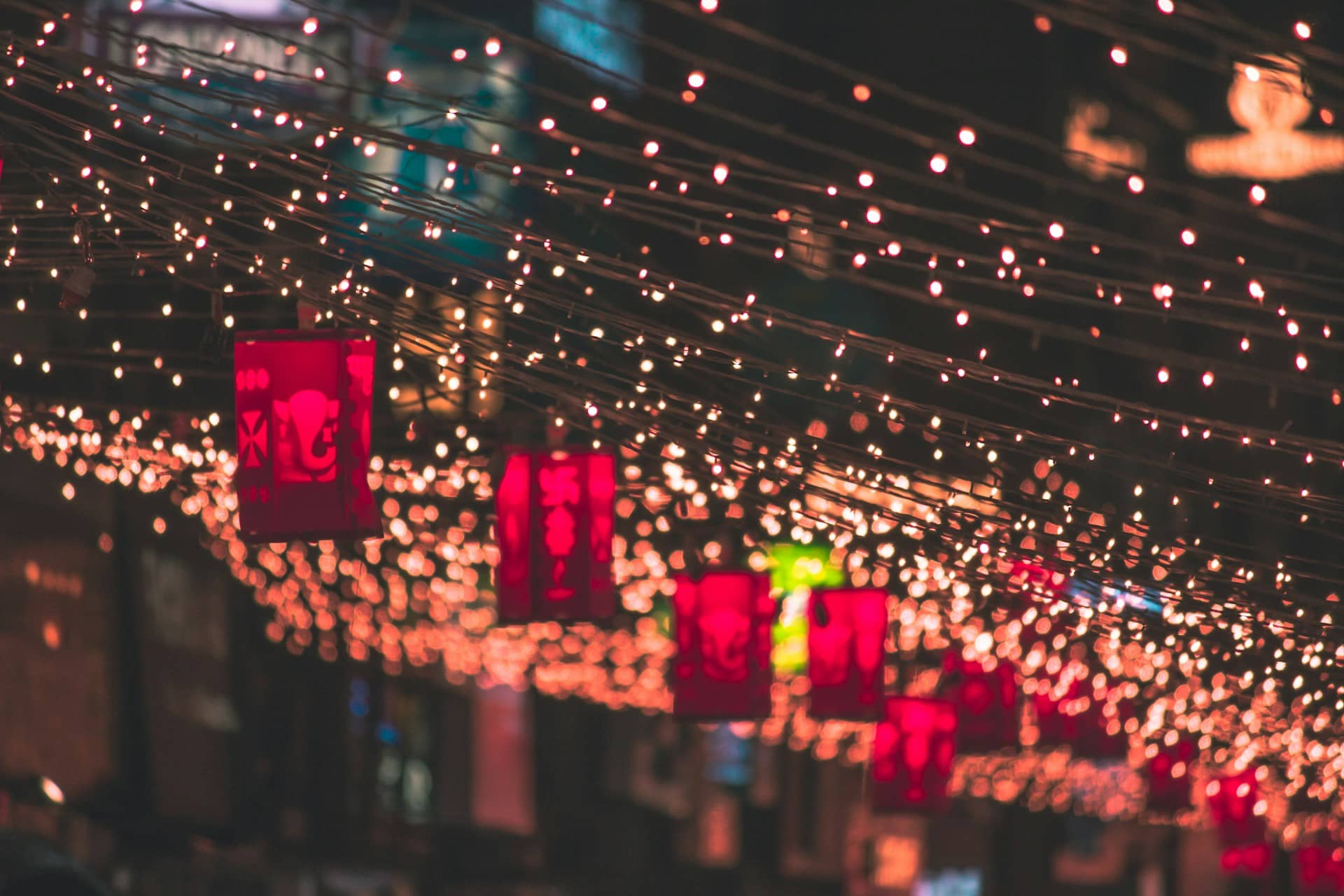
Tihar: The Festival of Lights and Love
Oct 21, 2024
